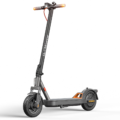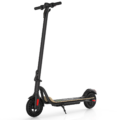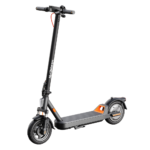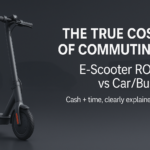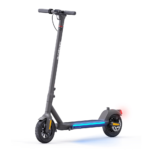- Home
- Scooters
- Electric Scooters
- MEGAWHEELS S10-7.8
MEGAWHEELS S10-7.8
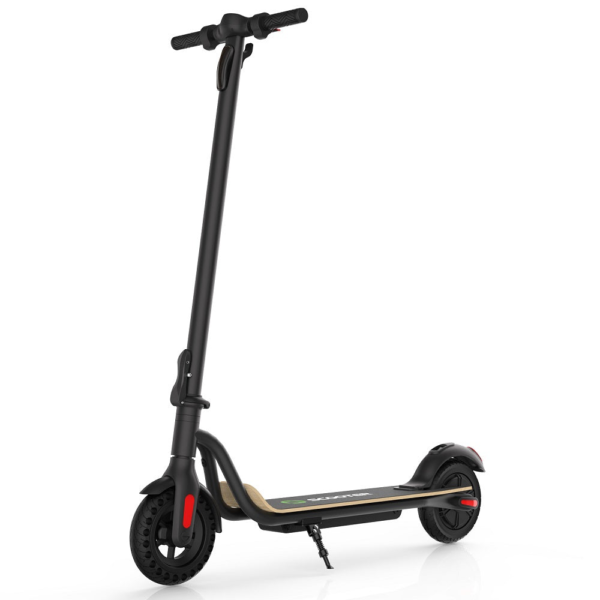

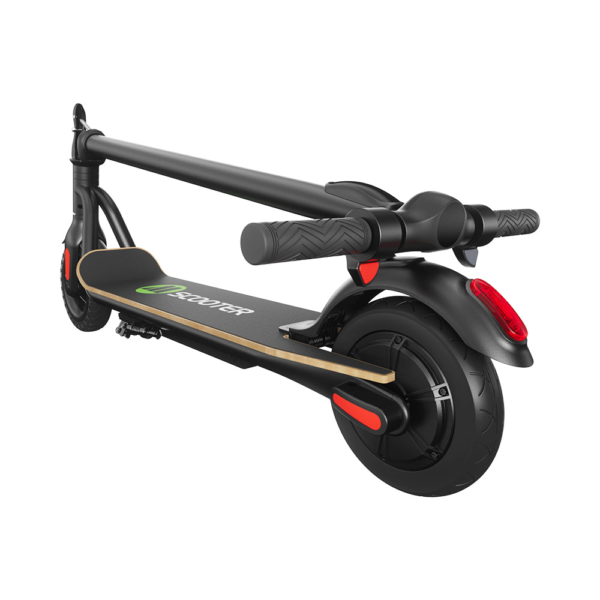
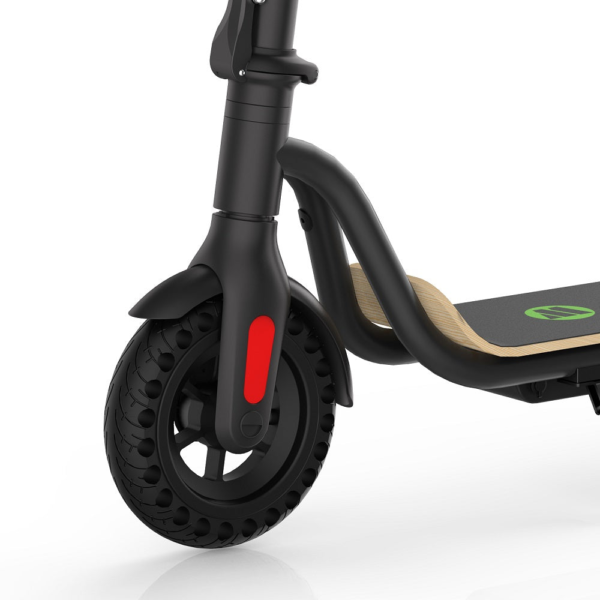
- Battery Range: 11.2–13.7 miles (18–22 km)
- Top Speed: 15.5 mph (25 km/h)
- Motor Power: 250 W
- Weight Capacity: 265 lb (120 kg)
- Charging Time: ≈5 h
- Scooter Weight: 26.5 lb (12.0 kg)
PROS
- Lightweight 26.5 lb
- Honeycomb solid tires
- 3 riding modes with LCD
- LED head & tail lights
- Quick folding design
CONS
- Limited range
- No suspension
- IP rating not specified
Table of contents
- What Is the MEGAWHEELS S10-7.8?
- How the MEGAWHEELS S10-7.8 Works
- Key Specifications (clean table)
- Design & Build Quality
- Performance Fundamentals
- Battery, Range & Efficiency
- Ride Quality & Comfort
- Braking & Safety Features
- Portability & Daily Usability
- Maintenance & Care
- Weather & Seasonal Considerations
- MEGAWHEELS S10-7.8 vs Alternatives
- Who the MEGAWHEELS S10-7.8 Is (and Isn’t) For
- FAQs
- Glossary
The MEGAWHEELS S10-7.8 is an entry-level, foldable electric scooter built for short, predictable trips. It pairs an efficient 250W hub motor with an approximately 7.8Ah, 36V battery, a simple LCD interface, and 8-inch wheels to keep weight and maintenance low. If you want a straightforward commuter for campus rides, quick errands, or last-mile connections, this model aims to deliver predictable performance without adding complexity. Moreover, it targets riders who value portability and a familiar ride feel more than raw power.
What Is the MEGAWHEELS S10-7.8?
At its core, the S10-7.8 is a compact, single-motor e-scooter designed around ease of use. The scooter’s structure follows a time-tested format: an aluminum alloy frame, a folding stem, a modest deck with a grippy standing surface, a handlebar-mounted display, and simple controls. Under the deck sits a 36V lithium-ion battery that prioritizes reliability and steady current draw. Consequently, it’s well suited to flat to mild terrain, urban paths, and predictable road surfaces. In practice, it works best as a low-stress daily tool.
Because it favors control over brute force, the S10-7.8 tops out around 25 km/h (15.5 mph). That speed aligns with many local regulations and feels manageable for newer riders. Meanwhile, the claimed range sits in the 17–22 km (10.6–13.7 mi) window for a ~75 kg rider, which covers a typical day’s errands with a single charge. As a result, owners can focus on routine rather than range anxiety.
How the MEGAWHEELS S10-7.8 Works
Think of the scooter as three systems that work together: propulsion, energy, and control. Accordingly, each contributes to the overall ride feel.
Motor & controller. A brushless hub motor rated 250W moves the rear wheel. The controller meters current from the battery to the motor in response to your throttle input. Because the motor sits in the wheel itself, there are no external chains or belts to maintain. This hub layout reduces mechanical complexity and keeps noise down. In addition, three preset speed profiles shape acceleration and cruising behavior so you can match conditions or conserve energy when needed.
Battery. The scooter uses a 36V lithium-ion pack marketed at ~7.8Ah for this variant, which equates to roughly 281 Wh (36V × 7.8Ah). That capacity suits short commutes and predictable routes. Charging takes about 5 hours from near empty, using a simple wall charger with 100–240V input. Furthermore, the temperature guidance is conventional: charge between about 0–40 °C (32–104 °F) and operate roughly between –15–40 °C (5–104 °F).
Throttle & display. The handlebar houses a compact LCD that shows speed, battery, and mode. A finger-operated throttle on the bar commands speed in a direct, linear way, which helps new riders learn quickly. The interface is intentionally minimal, so you can glance down, confirm your status, and keep your focus on the path. Additionally, mode changes happen with simple button presses, and the scooter can automatically power down after several minutes of inactivity to conserve the pack.
Brakes. Electronic braking (regen) uses the hub motor to slow the wheel when you release the throttle or engage braking. This system provides gentle deceleration and helps stretch range slightly because some kinetic energy returns to the battery as electrical energy. There’s no separate disc listed for this variant; instead, the focus stays on electronic control with predictable, low-maintenance behavior and the lighting set for visibility.
Key Specifications (clean table)
General
| Item | Value |
|---|---|
| Model | MEGAWHEELS S10-7.8 |
| Intended use | Portable, entry-level commuting / last-mile |
| Rider weight limit | 120 kg (265 lb) |
| Net weight | 11.9 kg (26.2 lb) |
| Wheel size & type | 8 in front pneumatic; 8 in rear solid |
| Display | LCD |
| Lights | LED headlight + LED taillight |
| Speed modes | 3 (≈10 / 20 / 25 km/h) |
Performance & Power
| Item | Value |
|---|---|
| Motor | 250W brushless rear hub, 36V |
| Top speed (claimed) | 25 km/h (15.5 mph) |
| Claimed gradeability | ~15% (≈ 8.6°) |
Battery, Charging & Electrical
| Item | Value |
|---|---|
| Battery | 36V ~7.8Ah lithium-ion (~281 Wh) |
| Range (claimed) | 17–22 km (10.6–13.7 mi) at ~75 kg rider |
| Charge time | ≈ 5 hours |
| Charger input | AC 100–240V, 50/60 Hz |
| Operating temp | –15–40 °C (5–104 °F) |
| Charging temp | 0–40 °C (32–104 °F) |
| Storage temp | –20–25 °C (–4–77 °F) |
| Auto power-off | Yes, after inactivity |
Build & Dimensions (include folded dimensions)
| Item | Value |
|---|---|
| Frame | Aluminum alloy |
| Dimensions (unfolded) | 1046 × 430 × 1180 mm (41.2 × 16.9 × 46.5 in) |
| Dimensions (folded) | 1046 × 430 × 480 mm (41.2 × 16.9 × 18.9 in) |
Safety & Control
| Item | Value |
|---|---|
| Braking | Electronic/regenerative hub braking |
| Lighting | LED headlight and taillight |
| Reflectors | Not specified |
| IP rating | Not specified |
Features & Extras
| Item | Value |
|---|---|
| Cruise Control | Not advertised |
| Speed profiles | 3 selectable modes |
| Power management | Auto shut-off after inactivity |
Warranty & Compliance
| Item | Value |
|---|---|
| Warranty | 12-month limited warranty (manufacturer) |
| Returns | 30-day return policy (brand policy) |
| Legal/Compliance | Use in accordance with local regulations |
Design & Build Quality
The S10-7.8 keeps its construction simple. The aluminum alloy frame balances cost, stiffness, and weight, while the folding stem helps the scooter store under desks or in car trunks. The deck provides a straightforward, grippy surface and enough length for a relaxed, staggered stance. Because the scooter sits in the sub-12 kg range, it feels easy to nudge around tight spaces and carry up short flights of stairs. That weight also helps with snappy starts from a standstill.
Up front, the pneumatic 8-inch tire adds compliance and helps to round off sharp edges from potholes or expansion joints. In the rear, the solid 8-inch tire eliminates punctures and cuts down on upkeep. Consequently, the pairing works like a passive “hybrid suspension”: some give up front, dependable durability in back. You won’t confuse it with a dedicated suspension system; nevertheless, the split approach offers reassuring feedback when you’re new to micromobility.
The cockpit is intentionally uncluttered. You get an LCD with speed, mode, and battery readout, plus simple buttons for power, lights, and modes. Because everything is close together, you can learn the layout in a single ride. Likewise, the stem’s stiffness is appropriate for the scooter’s speed class; it feels direct at cruising speeds and doesn’t encourage wobble if you keep your stance loose and weight over the deck.
Fit-and-finish matches the scooter’s value mission. Panel gaps are tidy, the latch mechanism operates with a clear click, and the deck rubber is secure. Cables are routed cleanly, and the headlight placement makes you visible without blasting glare into oncoming eyes. As always, check fasteners after unboxing; a brief walkthrough gets everything dialed before your first commute.
Performance Fundamentals
Acceleration. With a 250W hub, the S10-7.8 launches in a controlled way. It doesn’t surge, and it doesn’t feel sluggish either. In the lowest mode, it eases you into motion for busy sidewalks or shared spaces. In the highest mode, it reaches cruising speed without drama. Because output is modest, traction remains predictable, even on cooler mornings. Moreover, throttle response is linear, so new riders can build confidence quickly.
Cruising stability. At 25 km/h (15.5 mph), the chassis feels secure. The 8-inch front pneumatic tire helps the bar stay calm across minor chatter. Meanwhile, the rear solid tire tracks faithfully as long as you avoid abrupt weight shifts. Keep your knees slightly bent and your elbows soft; that athletic stance absorbs shock and keeps micro-wobble away. Additionally, a relaxed grip reduces bar input and encourages straight-line stability.
Hill behavior. The S10-7.8 claims around 15% climbing ability. In real use, that means it handles gentle city hills and ramps, especially with a lighter rider. On longer grades around 7–10%, expect speeds to fade and plan for patient ascents. That’s normal for scooters in this power class. For best results, enter a climb with some momentum and hold a steady throttle. Similarly, avoid frequent mode changes mid-hill; consistent power delivery feels smoother and more efficient.
Battery, Range & Efficiency
The ~7.8Ah, 36V pack gives the S10-7.8 a usable ~281 Wh of energy. That output aligns with the claimed 17–22 km (10.6–13.7 mi) range window under moderate loads and urban speeds. Actual range depends on many variables. Rider mass, headwinds, route elevation, temperature, and stop-and-go traffic all matter. If you weigh more than 75 kg (165 lb), or if temperatures dip near freezing, expect the low end of the range window. Conversely, a lighter rider cruising on flat paths at modest speed can land closer to the high end. In short, match your expectations to your route and conditions.
Charging requires roughly 5 hours from near empty. As a rule, avoid deep discharges. Top the pack to about 80–90% when you can, and store it around 50–60% if you’ll park the scooter for several weeks. Because lithium-ion cells dislike heat, charge and store within the recommended temperature guidance. Additionally, the scooter has an automatic power-down after several minutes, which prevents phantom drain if you forget to switch it off after a ride.
Efficiency tips are straightforward. Ride in the middle speed mode when you don’t need max pace. Keep your tires properly inflated to reduce rolling losses. Coast when sightlines are clear rather than toggling throttle on and off. Finally, set aside a weekly moment to clear debris from the wheels; a small stone lodged in the tread can create drag you’ll feel over a whole commute. As a bonus, those habits also extend component life.
Ride Quality & Comfort
The front pneumatic 8-inch tire is your primary comfort feature. It damps small impacts and lets you hold your line through coarse asphalt. The rear solid 8-inch tire won’t cushion hits as much; however, it offers a steady, predictable footprint and removes flat-tire surprises that delay commutes. Together, the two ends create a balanced feel: firm yet manageable. Moreover, that mix keeps maintenance simple while still taking the sting out of rough patches.
Stem flex is low at this speed and wheel size. You can push through mild choppy sections without the bar feeling twitchy. The deck length supports a natural stance with one foot forward and one foot angled. Because the scooter is light, it responds to weight shifts quickly. That quick response helps with small steering corrections as you pass pedestrians or line up for curb cuts. Keep your shoulders relaxed and your hands light on the grips; the chassis does the rest. Similarly, avoid locking your knees, since a bit of flex smooths out bigger bumps.
Braking & Safety Features
The S10-7.8 relies on electronic/regenerative braking through the hub motor. This system shines for low-maintenance ownership and smooth deceleration. Squeeze the brake control or release the throttle early, and you’ll feel the motor pull the scooter down to a calm roll. Because regen focuses on moderation rather than emergency stops, plan extra space when descending or approaching intersections. Therefore, read the road ahead and brake early.
Lighting is integrated and simple. The LED headlight improves conspicuity at dusk, while the rear light alerts others when you’re on the move. Use additional reflective wear if you ride at night, and consider a bar-mounted auxiliary light if your routes are very dark. As for weather sealing, there is no official IP rating published for this model. Consequently, avoid riding in heavy rain or through standing water; it’s wise to treat it as a fair-weather commuter.
Portability & Daily Usability
With a 11.9 kg (26.2 lb) curb weight, the S10-7.8 is easy to lift into a trunk or carry up a few stairs. The folded size—1046 × 430 × 480 mm (41.2 × 16.9 × 18.9 in)—slides under desks and into narrow storage spaces without fuss. The latch mechanism engages quickly, and the bar acts as a stable handle while you walk. Because the scooter is relatively slim, it also occupies less hallway space at home. As a result, storage becomes an afterthought rather than a daily puzzle.
For security, carry a compact U-lock or folding lock and choose sturdy bike racks or immovable fixtures when you can. Since the scooter is light, you can also carry it into cafés or classrooms. That habit prevents theft and protects the battery from temperature extremes while you’re inside. Additionally, bringing the scooter indoors keeps the deck dry and the bearings clean.
Maintenance & Care
Although the S10-7.8 minimizes upkeep, a light routine keeps it at its best:
- Before each ride: Check tire condition. Confirm the front pneumatic tire pressure is within the recommended range (use a reliable gauge). Ensure lights operate and the display shows adequate battery. Furthermore, listen for unusual noises during the first block of your ride.
- Weekly: Inspect fasteners on the stem latch, handlebar clamp, and brake control. Wipe the deck and frame with a slightly damp cloth; avoid spraying water near the power button or charging port. Additionally, rotate the wheels by hand to feel for roughness or debris.
- Monthly: Check the throttle and brake control feel for smooth operation. Look for cable rub points and adjust routing if needed. Also, inspect the charging port cap to ensure it seals properly.
- Battery habits: Charge within the recommended 0–40 °C (32–104 °F) window, and avoid full discharges when possible. If storing for more than a month, charge to around 50–60% and top up every three months.
- Software/firmware: This model focuses on simple hardware controls rather than an app workflow. Therefore, there are fewer variables to troubleshoot, which simplifies ownership.
Weather & Seasonal Considerations
Temperature and moisture influence range and traction. In cold conditions, lithium-ion chemistry delivers less energy, so plan for the lower end of the range window. Warm the pack indoors before charging and set off with a full battery if your route includes climbs. In summer, heat helps range but can stress the pack if the scooter sits in direct sun. Accordingly, park in shade and let the deck cool before charging.
Because no IP rating is listed, treat wet rides with caution. Light, brief splashes may occur in real life, yet you should avoid heavy rain, pressure washing, or puddles. Tires also behave differently when wet. The front pneumatic tire keeps grip better than a slick solid tire; still, reduce speed, increase braking distance, and avoid paint lines and metal covers, which turn slick when damp. Likewise, keep your path choices conservative whenever visibility drops.
MEGAWHEELS S10-7.8 vs Alternatives
In the commuter landscape, scooters split by priorities: portability, comfort, and power. The S10-7.8 sits in the portability camp. It’s lighter than many dual-suspension or dual-motor machines, and it folds compactly. It also asks less from maintenance because of its simple brake design and solid rear tire. Therefore, if you want low ownership friction, it’s a strong candidate. Additionally, if you’re exploring an efficiency-first sibling within the same family, the MEGAWHEELS A6L Eco offers a lighter, minimalist approach suited to short urban hops.
Against comfort-focused models with larger pneumatic tires or suspension, the S10-7.8 trades some plushness for simplicity and cost. On very coarse surfaces, a suspended front end or larger diameter wheels will feel calmer. However, those choices raise weight and price. If you ride mostly on decent pavement, the S10-7.8’s hybrid tire setup is a practical fit. Moreover, fewer moving parts mean fewer things to adjust.
Compared with performance-oriented scooters, its 250W motor and limited top speed provide a calmer rhythm. That’s ideal for paths shared with pedestrians or for riders who prefer a steady, predictable pace. If you regularly face long hills or high-speed arterials, a higher-output class may suit you better. Nevertheless, for flat cities and short hops, this model’s balance is hard to beat. In short, it prioritizes everyday practicality over outright speed.
Who the MEGAWHEELS S10-7.8 Is (and Isn’t) For
Great for:
- Students who need a compact, credible commuter between dorms, transit stops, and classes.
- Multi-modal travelers who carry a scooter into trains or buses, then ride the final mile to work.
- Apartment dwellers with limited storage who want fold-and-stow convenience.
- New riders who value straightforward controls, moderate speed, and simple maintenance.
Not ideal for:
- Long-range commuters who routinely exceed 15 km (9 mi) each way without a charging stop.
- Hilly neighborhoods where grades regularly exceed 10% for extended distances.
- Heavy cargo use or rough roads where larger wheels, suspension, or higher power would pay off.
FAQs
1) What is the real-world range I should expect?
Expect 10–14 miles (17–22 km) under moderate conditions with a rider around 75–85 kg (165–187 lb). Cold weather, headwinds, frequent stops, and hills lower that number. Conversely, calm weather and flat paths improve efficiency.
2) Does the S10-7.8 have cruise control?
No. Cruise control is not advertised for this model. Instead, use the three speed modes to manage pace and conserve battery.
3) How steep a hill can it climb?
The scooter claims around 15% under favorable conditions. Short, mild climbs are fine, but long, steep grades will slow the scooter. Therefore, enter hills with momentum and commit to a steady throttle.
4) Can I ride it in the rain?
There’s no official IP rating listed. Consequently, avoid heavy rain and standing water. If you’re caught in a light sprinkle, slow down, extend braking distances, and dry the scooter afterward.
5) How long does charging take?
About 5 hours from low state-of-charge. Additionally, keep charging within the recommended temperature range for best battery health.
6) What’s the warranty?
MEGAWHEELS lists a 12-month limited warranty and a 30-day return policy. Keep your proof of purchase and follow the brand’s instructions for support.
7) Where can I find a “MEGAWHEELS S10-7.8 overview” of the core facts?
You’re reading it. The sections above summarize the motor, battery, range, dimensions, controls, and care in one place.
Glossary
- Ah (Amp-hours): A measure of battery capacity. Higher Ah can mean more stored energy, assuming voltage equals.
- Wh (Watt-hours): Battery energy (volts × amp-hours). It estimates range more directly than Ah alone.
- Controller: The electronics that meter current from the battery to the motor based on throttle input.
- Hub motor: An electric motor built into the wheel hub. It reduces parts and simplifies maintenance.
- Regen (regenerative braking): Using the motor as a generator to slow the scooter and feed energy back to the battery.
- Stem flex: Side-to-side or fore-aft deflection felt at the handlebar. Some flex at low speeds can feel comfortable; too much feels vague.
- IP rating: Ingress Protection score. It describes dust and water resistance; not listed for this model.
- Gradeability: The steepness a scooter can climb, often stated in % or degrees.
- Pneumatic tire: An air-filled tire that absorbs small bumps and offers grip.
- Solid (honeycomb) tire: A puncture-resistant tire with molded cells for some compliance.
- Torque: Rotational force at the wheel; more torque helps starts and hill climbs.
- Thermal limits: Protective thresholds that reduce power to prevent overheating.
- Cutoff voltage: The pack voltage at which the controller stops discharge to protect battery health.
- Mode profiles: Preset speed/acceleration maps you can select to match conditions.
- Deck: The standing platform; length and grip influence comfort and control.
Final Thoughts
The MEGAWHEELS S10-7.8 focuses on consistency. It keeps weight low, the interface simple, and upkeep minimal. You get regulated speed, selectable modes, predictable braking, and practical range for short urban trips. If your priorities are clear—portability, ease, and daily reliability—this scooter’s feature set fits the brief. You won’t chase top-speed thrills here. Instead, you’ll enjoy a calm, repeatable commute with a small footprint at home and at work. Ultimately, that’s the value of a well-sorted, no-drama commuter.
Specifications
General
| Model The Model specifies the exact version or name of the scooter. It helps identify its unique design, features, and specifications within the manufacturer’s product line. Knowing the model makes it easier to compare options, find compatible accessories, or look up support information. | S10-7.8 |
| Brand The Brand identifies the manufacturer or company that designs and produces the scooter. A trusted brand is a sign of quality, reliability, and good customer support. Well-known brands often have higher standards for safety, performance, and after-sales service, giving you more confidence in your purchase. | MEGAWHEELS |
| Release Date The Release Date indicates when the scooter model was officially launched on the market. This helps you know how current the design, technology, and features are. A newer release date often means updated components, improved performance, and the latest safety or smart features. | 17 November 2025 |
| Recommended Age Recommended Age indicates the minimum age range that the scooter is designed for, based on safety, size, and ease of use. Following the recommended age helps ensure that riders can handle the scooter’s speed, weight, and controls comfortably and safely. Always check local laws and use protective gear, especially for younger riders. | +16 |
Performance & Power
| Motor Power (Wattage) What it means: The motor power, measured in watts (W), shows how strong the scooter’s electric motor is. Why it matters: Higher wattage usually means better acceleration, more torque, and improved performance on hills or rough terrain. For example, a 250W motor is good for flat city roads and light riders, while a 500W or 1000W motor provides more power for faster speeds or climbing steep inclines. | 36 V 250 W rear hub motor |
| Top Speed The Top Speed indicates the maximum speed that the scooter can reach under optimal conditions. It’s usually measured on level ground with a fully charged battery and an average rider weight. A higher top speed allows you to travel longer distances faster, but always ensure you ride within legal speed limits and your personal comfort zone for safety. | 15.5 mph (25 km/h) |
| Battery Capacity Battery Capacity refers to the total amount of energy the scooter’s battery can store, usually measured in ampere-hours (Ah) or watt-hours (Wh). A higher battery capacity means you can ride longer distances on a single charge, reducing the need for frequent recharging. Keep in mind that actual range can vary depending on rider weight, terrain, speed, and weather conditions. | 36 V 7.8 Ah (281 Wh) |
| Estimated Range per Charge The Estimated Range per Charge indicates the average distance the scooter can travel on a single full battery charge. This range is calculated under optimal conditions, such as flat terrain, moderate speed, and average rider weight. Real-world range may vary depending on riding style, terrain, weather, and load. A longer range means fewer recharges and greater freedom for longer trips. | Up to 11.2–13.7 miles (18–22 km) |
| Hill Climb Ability Hill Climb Ability describes the maximum incline or slope that the scooter can handle while maintaining stable performance. It’s typically expressed as a percentage or in degrees. A higher hill climb rating means the scooter can tackle steeper hills without losing too much speed or power. Actual climbing performance may vary based on rider weight, battery charge, and terrain conditions. | Up to 15% |
| Drive System The Drive System refers to how power from the motor is delivered to the wheels. Electric scooters typically use either a hub motor (directly integrated into the wheel) or a chain/belt drive system. A high-quality drive system ensures smooth acceleration, efficient power transfer, and low maintenance. The choice of drive system affects performance, noise level, and overall ride experience. | Rear hub (RWD) |
Charging & Electrical
| Charging Time Charging Time indicates how long it takes to fully recharge the scooter’s battery from empty to 100% using the standard charger provided. Faster charging means less downtime and more time on the road. Actual charging time may vary slightly depending on battery capacity, charger output, and environmental conditions. | Approx. 5 hours |
| Battery Type Battery Type refers to the specific technology used in the scooter’s battery, which affects performance, lifespan, weight, and charging time. Most modern electric scooters use high-quality lithium-ion (Li-ion) batteries because they offer a good balance of energy density, durability, and low maintenance. A reliable battery type ensures consistent power delivery and longer riding ranges. | Lithium-ion pack (BMS not specified) |
| Removable Battery A Removable Battery means the battery pack can be easily detached from the scooter for convenient charging and replacement. This feature allows you to charge the battery separately, swap it with a spare for extended range, or securely store it indoors in extreme weather. Removable batteries add flexibility and make it easier to keep your scooter powered up wherever you are. | Non-removable internal battery |
| Regenerative Braking Regenerative Braking is an energy-saving feature that converts some of the energy normally lost during braking back into battery power. When you slow down or brake, the motor works in reverse to generate electricity, which helps extend the scooter’s range and improves overall efficiency. This system also reduces wear on traditional brake components, leading to lower maintenance over time. | Not specified |
| Lighting Lighting refers to the built-in front and rear lights that enhance visibility and safety when riding in low-light conditions or at night. Good lighting helps you see the road ahead and ensures that other road users can see you. Many scooters include LED headlights, taillights, and sometimes brake lights or side reflectors for added safety and compliance with local traffic regulations. | LED headlight + rear LED/brake; reflectors |
Build & Dimensions
| Scooter Weight Scooter Weight refers to the total weight of the scooter when fully assembled, including the battery. This affects how easy it is to carry, lift, and store the scooter when not in use. A lighter scooter is more portable and convenient for commuting, especially if you need to carry it upstairs or onto public transport. Keep in mind that a sturdy frame and quality components may add to the weight but also contribute to better durability and ride stability. | 26.5 lb (12.0 kg) |
| Maximum Rider Weight Maximum Rider Weight indicates the highest rider weight that the scooter is designed to safely support while maintaining optimal performance and stability. Staying within this limit helps ensure reliable acceleration, braking, and climbing ability, and it protects the frame, suspension, and motor from excessive strain. Exceeding the recommended limit may reduce performance and increase wear on components. | 265 lb (120 kg) |
| Deck Size Deck Size refers to the dimensions of the scooter’s standing platform. A wider and longer deck provides more foot space, allowing you to stand comfortably and adjust your stance while riding. A well-sized deck improves balance and stability, especially on longer rides or at higher speeds. Compact decks, on the other hand, help keep the scooter lightweight and portable. | Low deck; compact, portable commuter |
| Handlebar Height Handlebar Height refers to the distance from the deck to the handlebars, which affects your riding posture and comfort. An appropriate handlebar height helps you maintain good balance, reduces strain on your back and arms, and makes steering more comfortable. Some scooters have adjustable handlebars to fit riders of different heights, while others have a fixed height for a streamlined design. | Fixed; ~46.5 in assembled height |
| Folding Mechanism The Folding Mechanism describes how easily and securely the scooter can be folded for carrying and storage. A well-designed folding system lets you quickly collapse the scooter into a compact size, making it convenient to transport on public transit, store under a desk, or fit into a car trunk. Look for sturdy latches and safety locks to ensure the scooter stays firmly in place when folded or unfolded. | Quick fold lever |
| Dimensions Folded Dimensions indicate the size of the scooter when it’s fully folded. This measurement shows how much space the scooter will take up when stored or carried, making it easier to check if it will fit in your car trunk, under a desk, or in a closet. Compact folded dimensions are ideal for commuters who need to bring their scooter on public transport or store it in tight spaces. | Unfolded: 41.1 × 16.9 × 46.5 in (104.5 × 43 × 118 cm); Folded: 41.1 × 16.9 × 18.9 in (104.5 × 43 × 48 cm) |
| Material Material refers to the primary construction materials used for the scooter’s frame and key components. High-quality materials like aircraft-grade aluminum, reinforced steel, or durable composites provide strength, stability, and a lighter overall weight. A sturdy material ensures the scooter can handle daily wear and tear while maintaining safety and performance. | Aluminum alloy + iron |
Safety & Control
| Brake Type(s) Brake Type(s) describe the braking systems the scooter uses to help you slow down or stop safely. Common brake types include mechanical brakes (like drum or disc brakes), electronic brakes, and foot brakes. Many scooters combine multiple braking systems for added safety and shorter stopping distances. The type and quality of brakes affect your control, especially when riding at higher speeds or on slopes. | Front electronic + rear mechanical foot brake |
| Suspension Suspension refers to the system that absorbs shocks and vibrations while riding, providing a smoother and more comfortable ride over uneven or rough surfaces. Scooters may have front suspension, rear suspension, or dual suspension for better shock absorption and stability. Good suspension helps reduce rider fatigue and improves control, especially when riding on bumpy roads or off-road paths. | None |
| Tire Type Tire Type refers to the kind of tires the scooter uses, which directly affects ride comfort, traction, and maintenance. Common types include solid (airless) tires, pneumatic (air-filled) tires, or hybrid options. Pneumatic tires offer better shock absorption and a smoother ride on rough surfaces, while solid tires are puncture-proof and require less upkeep. The right tire type helps ensure safe handling and a comfortable ride in different conditions. | 8.0″ honeycomb airless (solid) |
| Tire Size Tire Size indicates the diameter and width of the scooter’s tires, which affect ride comfort, stability, and how well the scooter handles different terrains. Larger tires generally offer better shock absorption and a smoother ride over bumps and rough surfaces, while smaller tires keep the scooter lighter and more portable. Choosing the right tire size helps ensure a balance between agility and comfort. | 8.0-inch |
| Kickstand The Kickstand is a built-in stand that allows you to park your scooter upright when it’s not in use. A sturdy kickstand keeps the scooter stable and prevents it from tipping over, protecting it from scratches and damage. It also makes storing and accessing your scooter more convenient, whether you’re at home, work, or on the go. | Not specified |
| Water Resistance Rating Water Resistance Rating indicates how well the scooter is protected against water and moisture, usually shown as an IP (Ingress Protection) rating. This rating helps you understand whether the scooter can handle light rain, splashes, or wet roads without damage. While most scooters are not fully waterproof, a good water resistance rating adds peace of mind when riding in changing weather conditions. Always avoid deep puddles or submerging the scooter to protect its electrical components. | Not specified |
Features & Extras
| Display/Console The Display (or Console) shows important real-time information about your ride, helping you monitor your scooter’s status at a glance. Typical displays show speed, battery level, distance traveled, and riding mode. Some models also include additional features like Bluetooth connectivity, app integration, or backlighting for better visibility at night. A clear and easy-to-read display enhances safety and convenience on every trip. | LCD display (speed, battery, mode, light status) |
| Ride Modes Ride Modes refer to the different speed and power settings you can choose to match your riding style or road conditions. Common modes include eco for maximum range and energy efficiency, standard for everyday balance, and sport or turbo for higher speed and stronger acceleration. Switching between ride modes allows you to customize performance, conserve battery, and ride safely in various environments. | Eco/Normal/Fast (3 modes) |
| Smart App Connectivity Smart App Connectivity lets you pair your scooter with a dedicated mobile app via Bluetooth. Using the app, you can monitor real-time ride stats like speed, battery level, and range, adjust settings such as ride modes or cruise control, lock the scooter for added security, and sometimes receive firmware updates. This feature adds convenience and allows you to personalize your riding experience right from your smartphone. | No app (not specified) |
| Anti-Theft System The Anti-Theft System helps protect your scooter from unauthorized use or theft. This feature can include built-in alarms, electronic motor locks, GPS tracking, or remote locking through a mobile app. A good anti-theft system provides peace of mind when parking your scooter in public spaces, adding an extra layer of security to safeguard your investment. | Not specified |
| Cruise Control Cruise Control allows you to maintain a steady speed without continuously holding the throttle. This feature makes longer rides more comfortable by reducing hand fatigue and providing a smoother, more relaxed riding experience — especially on flat, open roads or bike lanes. For safety, cruise control can usually be easily activated or deactivated while riding. | Not specified |
| Accessories Included Accessories Included lists the additional items that come with the scooter to enhance your riding experience and convenience. Common accessories may include a charger, kickstand, bell, lights, phone holder, or carrying strap. These extras add value by making your scooter safer, easier to use, and ready to ride straight out of the box. | Scooter, charger (42 V/1.5 A), tool kit, user manual |
Warranty & Compliance
| Warranty Period The Warranty Period indicates how long the manufacturer guarantees the scooter against defects in materials and workmanship under normal use. A good warranty provides peace of mind, showing the brand’s confidence in its product quality. Always check what parts are covered, such as the frame, battery, and motor, and follow the maintenance guidelines to keep your warranty valid. | Region-dependent (contact seller) |
| Certifications Certifications confirm that the scooter meets specific safety, quality, and environmental standards set by recognized organizations or regulatory bodies. Common certifications may include CE, RoHS, UL, or other local compliance marks, depending on your region. These certifications ensure that the scooter is manufactured to high standards and is safe and legal to use in your country. | Local micromobility compliance |


